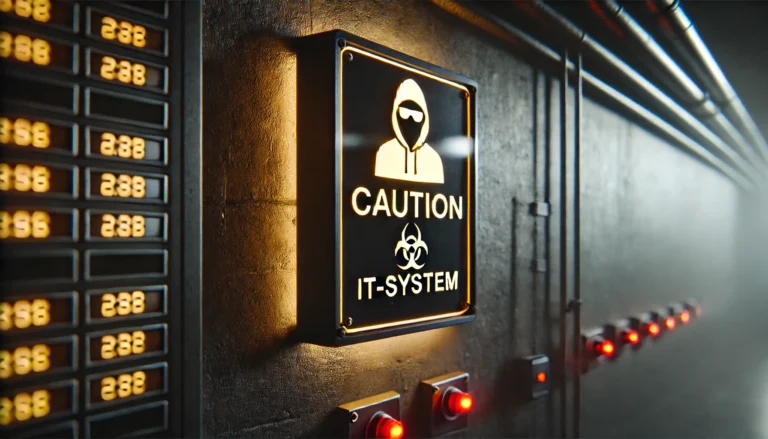The pace of change in cybersecurity has never been more rapid, driven by advancements in technology and an increasingly complex threat landscape. As organizations look to 2025, adapting to emerging trends is critical to staying ahead of adversaries. This article explores key developments that will shape cybersecurity in the near future, offering practical insights into their implications and strategies for organizations to bolster their defenses.
AI: A Double-Edged Sword
Artificial intelligence (AI) is set to be one of the most transformative forces in cybersecurity for years to come. On the defensive side, AI offers unparalleled capabilities for identifying, analyzing, and responding to threats at a scale and speed that manual processes cannot match. For example, AI-driven threat detection systems can process terabytes of network data in real-time, identifying anomalies that may signal a breach or a malicious insider. This ability to spot threats proactively and automate responses is a game-changer, particularly for organizations grappling with resource constraints and increasingly sophisticated attacks.
However, the same capabilities that make AI a powerful tool for defense also make it a formidable weapon in the hands of attackers. Ransomware-as-a-service (RaaS) operators and phishing campaigns are already leveraging AI to increase their effectiveness. Large language models (LLMs), for example, enable attackers to craft highly personalized phishing emails that are nearly indistinguishable from legitimate communications. Where past attempts at phishing were crude and easily spotted—such as the infamous “BÜ¥ ¥0UR LÜXUR¥ WÄTÇH N0VV” spam—modern attacks now mimic corporate emails, complete with professional language, logos, and contextually accurate details.
AI’s ability to automate and scale attacks also raises new concerns. Botnets powered by machine learning can launch highly coordinated assaults, exploiting vulnerabilities faster than defenders can patch them. Sophisticated malware is being developed that adapts dynamically to evade detection, learning from failed attempts to improve its success rate. These capabilities significantly increase the threat landscape, making traditional defenses insufficient in isolation.
Organizations must therefore evaluate AI-enabled security products with a critical eye. The allure of “AI-driven” solutions often leads to hasty adoption of tools with superficial integrations. Some products boast flashy features like chat-enabled interfaces or global models trained on customer data but fail to deliver meaningful improvements in security. Effective AI solutions must not only enhance existing capabilities but also operate within secure and ethical boundaries. For example, AI systems that process sensitive data locally—without sending it to external servers—reduce the risk of exposing critical information while maintaining compliance with privacy regulations.
Moreover, the rise of adversarial AI attacks is creating new challenges for cybersecurity teams. Attackers can manipulate AI models to produce incorrect results, undermining their reliability. Defenders must therefore adopt AI systems that are robust against such adversarial tactics, incorporating rigorous validation processes and fail-safes to ensure accuracy under duress.
To counter the growing sophistication of AI-driven threats, organizations should adopt a multi-pronged strategy. This includes leveraging AI for advanced threat detection while combining it with human oversight to interpret results and respond to nuanced scenarios. Additionally, investing in AI-specific training for cybersecurity teams will become essential, enabling them to understand both the capabilities and limitations of this transformative technology.
As AI continues to evolve, its impact on cybersecurity will only grow. The key to leveraging its potential lies in careful evaluation, strategic implementation, and a commitment to staying ahead of adversarial innovation. In 2025, AI will not just be a tool—it will be a battlefield.
Regulations: Opportunities and Challenges
The regulatory landscape for cybersecurity is intensifying, with frameworks like the Network and Information Security Directive (NIS2), Digital Operational Resilience Act (DORA), and the Cyber Resilience Act (CRA) shaping organizational priorities. These mandates aim to enhance the overall resilience of businesses and their supply chains by requiring structured risk management and incident response practices.
While certifications like ISO 27001 do not guarantee immunity from cyberattacks, they play a crucial role in reducing blind spots. A well-implemented certification process compels organizations to evaluate their assets, map out vulnerabilities, and establish response protocols. This proactive approach reduces the attack surface and ensures that businesses are better equipped to withstand incidents.
Compliance, however, should be seen as a foundation rather than a final goal. Over-reliance on certifications without addressing actual security gaps can lead to complacency. By integrating regulatory compliance into broader security strategies, organizations can achieve both operational benefits and alignment with emerging standards.
Emerging Technologies: Redefining Infrastructure
The technological foundations of cybersecurity are shifting, with edge computing emerging as a key trend. Unlike traditional cloud computing, which centralizes data processing, edge computing enables localized data analysis. This approach is particularly beneficial for latency-sensitive workloads or scenarios where compliance dictates that data cannot leave a specific location.
Blockchain technology is also set to mature in 2025, moving beyond its origins in cryptocurrency. Blockchain’s ability to provide immutable records and verify transactions securely opens new use cases in sectors like supply chain management and digital identity verification. While its adoption will vary by industry, blockchain offers promising opportunities to enhance data security and trust.
These developments highlight the importance of adaptable security strategies. Organizations must assess emerging technologies critically, identifying where they add value and integrating them into existing frameworks effectively.
The Human Factor: Enhancing Awareness
Despite advancements in technology, human behavior remains a pivotal element of cybersecurity. Phishing remains one of the most effective attack vectors, exploiting human error to bypass technical defenses. Training employees to recognize these threats is essential, but it must go beyond checkbox compliance to be truly effective.
Training programs should be tailored to the organization’s workforce, considering different levels of technical proficiency. For example, non-technical staff should focus on identifying suspicious emails or unusual system behaviors, while IT teams should be trained to respond to incidents effectively. Regular simulations and practical exercises can reinforce these lessons, ensuring employees remain vigilant.
Ultimately, a culture of cybersecurity must extend beyond formal training. Organizations that foster open communication about threats and empower employees to report concerns without fear of blame are better equipped to mitigate risks proactively.
Future-Proofing Through Architecture
The foundation of any resilient cybersecurity strategy lies in its architecture. Over-reliance on single-vendor solutions, while convenient, can create significant vulnerabilities. A breach in one component of a unified architecture can compromise the entire system, granting attackers unrestricted access.
Adopting a multi-vendor approach mitigates this risk, ensuring that vulnerabilities in one layer are compensated for by robust defenses in others. Zero-trust architecture exemplifies this principle, enforcing strict access controls and continuous verification. By treating every device and user as potentially untrusted, zero-trust minimizes the impact of breaches and prevents lateral movement within networks.
Organizations should also prioritize layered defenses that integrate tools from diverse vendors. This approach not only reduces reliance on any single point of failure but also enhances overall security by leveraging specialized solutions tailored to specific needs.
Conclusion
As the cybersecurity landscape continues to evolve, staying ahead of adversaries requires vigilance, adaptability, and strategic foresight. Emerging technologies like AI and blockchain, while promising, demand careful implementation to avoid unintended vulnerabilities. Compliance frameworks, when integrated into broader strategies, offer a strong foundation for resilience. Finally, fostering a culture of security and investing in robust architectures will ensure organizations remain prepared for the challenges of 2025 and beyond.
Contact us for a free initial consultation.



